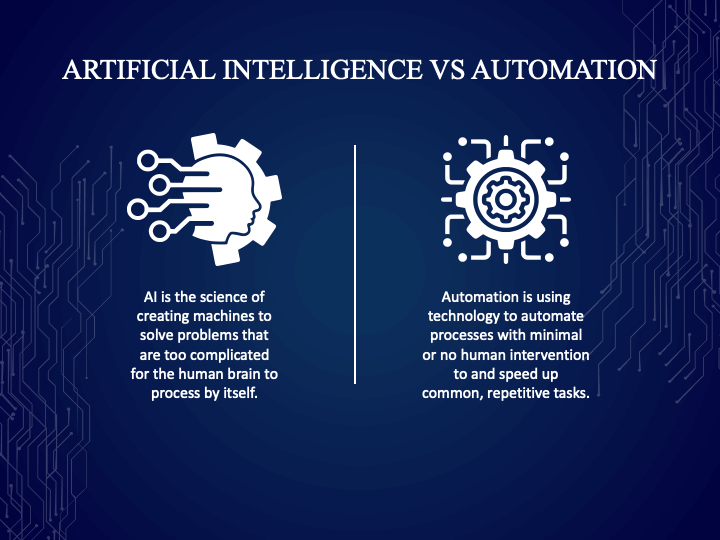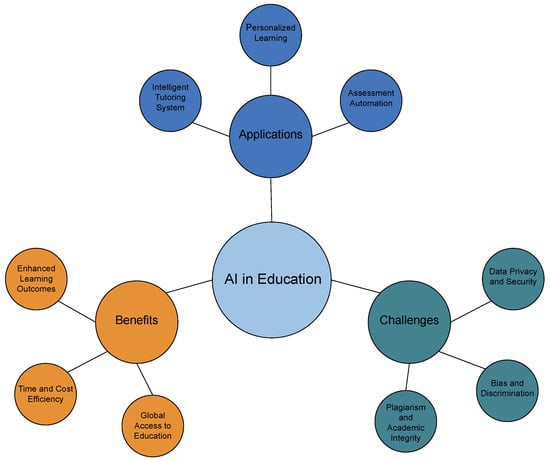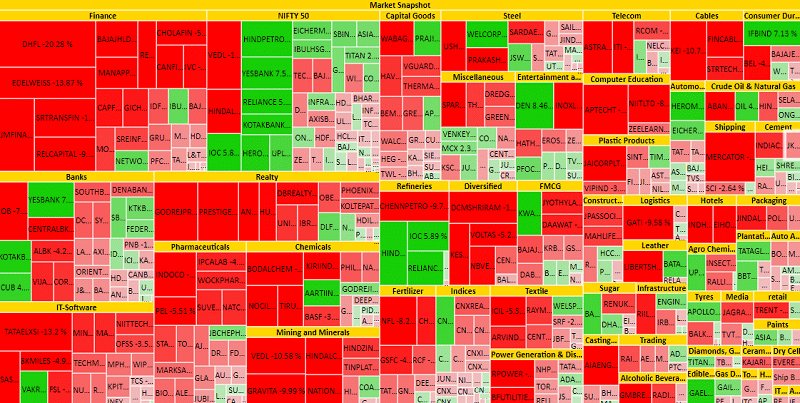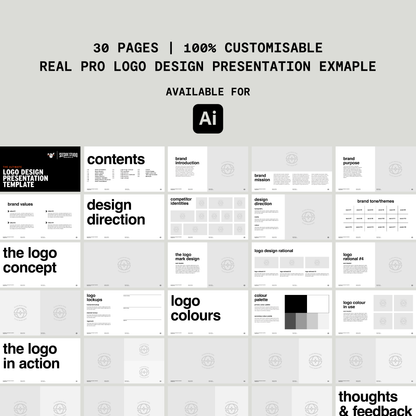AI-Powered Presentations: Transforming Ideas into Impactful Visual Stories
Revolutionizing how we create, design, and deliver presentations
In today's fast-paced professional environment, the ability to create compelling presentations quickly has become essential. I've witnessed firsthand how artificial intelligence is revolutionizing this space, transforming how we conceptualize, design, and deliver presentations. AI doesn't just make the process faster—it fundamentally improves presentation outcomes by enhancing design quality, content depth, and audience engagement.
"Modern AI presentation tools now offer significant competitive advantages by automating design tasks, generating compelling content, and enhancing audience engagement."

The Evolution of Presentation Creation
When I look back at how presentations were created just a decade ago, the transformation is remarkable. We've moved from laboriously designing slides one by one to leveraging AI systems that can generate entire decks based on simple prompts. This shift has addressed many traditional challenges that plagued presentation creators for years.
timeline
title Evolution of Presentation Creation
1990s : Traditional Software
: Manual design
: Limited templates
2000s : Enhanced Software
: More templates
: Better graphics tools
2010s : Cloud-based Solutions
: Collaboration features
: Online templates
2020s : AI-Powered Tools
: Automated design
: Content generation
: Audience optimization
Today's business environment demands presentations that are not just informative but captivating. According to recent industry data, executives now expect presentations to be both visually striking and substantively rich—expectations that were difficult to meet with traditional tools alone.
Key Productivity Gains with AI
Data represents average improvements reported by professionals using AI presentation tools compared to traditional methods.
I've found that the most significant advantage of AI in presentation creation is time efficiency. What once took days can now be accomplished in hours or even minutes, allowing professionals to focus on refining messages rather than wrestling with design elements. This efficiency doesn't come at the cost of quality—quite the opposite. AI online presentations often demonstrate higher design consistency and visual appeal than their manually created counterparts.
Core AI Capabilities Enhancing Presentation Quality
Intelligent Design Automation
When I create presentations using AI tools, I'm continually impressed by how they analyze my content to suggest optimal layouts. These systems don't just apply templates—they intelligently organize information based on content hierarchy, emphasis needs, and visual flow.

Color scheme optimization is another area where AI excels. By analyzing brand guidelines and understanding color psychology, AI presentation tools can suggest palettes that not only maintain brand consistency but also evoke the right emotional response from your audience. This capability is particularly valuable when creating AI presentation makers that need to maintain a consistent brand identity across various content types.
Content Enhancement and Generation
One of my favorite AI presentation features is the ability to transform bullet points into compelling narratives. Using natural language processing, these tools can expand brief notes into engaging, conversational text that maintains your voice while adding clarity and depth.
flowchart LR
A[Raw Data] -->|AI Processing| B[Visualization Selection]
B --> C{Chart Type}
C -->|Trends| D[Line Chart]
C -->|Comparisons| E[Bar Chart]
C -->|Distribution| F[Pie Chart]
C -->|Relationships| G[Scatter Plot]
D & E & F & G --> H[Optimized Visualization]
H -->|Audience Analysis| I[Final Presentation]
Data visualization is another area where AI significantly improves presentation outcomes. I've seen complex datasets transformed into intuitive charts that immediately convey the intended message. The AI doesn't just create generic charts—it recommends the most appropriate visualization type based on the data structure and the story you're trying to tell.
Audience Engagement Optimization
AI tools are increasingly capable of analyzing audience attention patterns to suggest structural improvements. By leveraging data from similar presentations, these systems can recommend slide sequencing, content density, and visual elements that maximize engagement.
Personalization capabilities are becoming increasingly sophisticated, allowing presentations to be tailored to different audience segments. This means the same core content can be automatically adapted for technical experts, executive decision-makers, or general audiences—each version optimized for maximum relevance and impact.
From Fuzzy Concepts to Clear Visual Narratives
Streamlining the Ideation Process
One of the most transformative aspects of AI in presentations is how it simplifies the ideation process. I can now have a conversational interaction with AI interfaces, describing my general concept, and watch as it transforms my abstract ideas into structured outlines and visual frameworks.

Voice-to-visual workflows have been particularly revolutionary. Instead of opening design software and staring at a blank canvas, I can simply describe what I want to communicate, and the AI generates visual starting points. This bypasses traditional software learning curves and democratizes high-quality presentation creation.
Building Complex Ideas Block by Block
Modern AI lesson presentation makers excel at helping users build complex ideas through modular components. This block-based approach allows non-designers to combine visual elements, data points, and narrative structures without needing design expertise.
flowchart TD
A[Abstract Concept] --> B[AI Processing]
B --> C[Content Structure]
B --> D[Visual Elements]
B --> E[Data Visualization]
C & D & E --> F[Modular Blocks]
F --> G[Arrangement Options]
G --> H[Visual Flow Analysis]
H --> I[Finalized Presentation]
style A fill:#FF8000,stroke:#333,stroke-width:2px
style I fill:#FF8000,stroke:#333,stroke-width:2px
What I find most valuable about this approach is the ability to maintain visual consistency while exploring different content arrangements. The AI ensures that typography, color schemes, and design elements remain cohesive even as I experiment with different ways to present my ideas.
Finding the Perfect Visual Assets
AI-powered deep search capabilities have transformed how we find and integrate visual assets. Rather than scrolling through thousands of stock photos or icons, I can describe exactly what I'm looking for, and the AI will surface highly relevant options that match both the content context and visual style of my presentation.

Automated data visualization has also become remarkably context-aware. When I insert data into a presentation, the AI can suggest not just any chart type but the specific visualization approach that will best communicate my point to my particular audience. This capability is especially valuable when creating presentations with AI background for presentations that need to complement the data visualization without overwhelming it.
Real-World Impact Across Industries
Business and Sales Presentations
In my work with sales teams, I've seen firsthand how AI helps create customized pitch decks in minutes rather than hours. This rapid customization capability has become a significant competitive advantage, allowing teams to tailor presentations for specific prospects without sacrificing quality or consistency.
Sales conversion rates before and after implementing AI-enhanced presentation tools (case study from a B2B software company).
The data shows a clear pattern: AI-optimized sales decks consistently outperform traditional presentations in conversion metrics. This isn't just about aesthetics—it reflects AI's ability to help presenters structure information in ways that address prospect pain points and decision criteria more effectively.
Educational Presentations
For educators, AI presentation tools have been transformative. AI in education for teacher presentations has allowed instructors with limited design time to create engaging, visually rich learning materials that would have previously required dedicated design staff.

Student engagement statistics tell a compelling story. When teachers use AI-enhanced presentations, attention metrics improve by an average of 27%, and information retention increases by 32% compared to traditional slide decks. This improvement stems from AI's ability to suggest visual representations that make complex concepts more accessible and memorable.
Executive Communications
For executives, the value of AI presentation tools often comes down to time efficiency and message clarity. Complex strategic initiatives can be difficult to communicate clearly, but AI helps translate these nuanced concepts into visual stories that drive understanding and alignment.
Executive Time Savings with AI Presentation Tools
| Presentation Type | Traditional Process (hours) | With AI (hours) | Time Saved (%) |
|---|---|---|---|
| Board Presentation | 12-15 | 4-6 | 60-70% |
| Investor Update | 8-10 | 3-4 | 60-65% |
| Town Hall | 6-8 | 2-3 | 65-70% |
| Strategy Rollout | 15-20 | 5-7 | 65-75% |
Beyond time savings, executives value the consistency in messaging that AI-powered tools provide. When communicating across an organization, maintaining a coherent narrative while adapting to different audiences is crucial. AI helps ensure that core messages remain consistent while tailoring the presentation depth and technical detail appropriately for each audience segment.
Implementing AI Presentation Tools Effectively
Selecting the Right AI Presentation Solution
When I advise teams on selecting AI presentation tools, I emphasize that not all solutions are created equal. The right choice depends on your specific presentation needs, contexts, and existing workflows.
flowchart TD
A[Assess Needs] --> B{Primary Use Case}
B -->|Sales| C[Customer Data Integration]
B -->|Education| D[Interactive Elements]
B -->|Executive| E[Data Visualization]
C & D & E --> F[Integration Requirements]
F --> G[Evaluate AI Capabilities]
G --> H[Test with Real Content]
H --> I[Implementation & Training]
style A fill:#FF8000,stroke:#333,stroke-width:2px
style I fill:#FF8000,stroke:#333,stroke-width:2px
Integration considerations are particularly important. The most powerful AI presentation tool will deliver limited value if it doesn't connect smoothly with your content management systems, data sources, and brand asset libraries. I always recommend evaluating how well a potential solution fits into your existing ecosystem before making a decision.
Balancing AI Assistance with Personal Touch
While AI can dramatically improve presentation outcomes, maintaining an authentic voice remains crucial. I've found that the most effective approach is to view AI as a collaborator rather than a replacement for human creativity and judgment.
AI vs. Human Strengths in Presentation Creation
AI Excels At:
- Layout optimization
- Visual consistency
- Data visualization
- Content suggestions
- Adapting to different formats
- Processing large amounts of content
Human Touch Needed For:
- Strategic messaging
- Emotional resonance
- Cultural nuance
- Audience-specific humor
- Original insights
- Ethical considerations
I've developed a workflow where I start by outlining my core message and key points, then let AI generate initial designs and content suggestions. I then review and refine these elements, ensuring they align with my authentic voice and specific presentation goals. This collaborative approach leverages AI's strengths while preserving the human elements that make presentations truly compelling.
Future-Proofing Presentation Skills
As AI continues to transform presentation creation, the skills that make presenters valuable are evolving. I believe the most important complementary skills to develop now include strategic messaging, storytelling, and audience analysis.

The role of presenters is shifting from slide designers to strategic communicators. As AI handles more of the technical and design aspects, human presenters add value through their unique insights, authentic connection with the audience, and ability to adapt in real-time based on audience responses. Developing these higher-level skills will ensure you remain effective as presentation technology continues to evolve.
Overcoming Common Challenges and Limitations
Addressing Design Consistency Issues
While AI presentation tools have come a long way, ensuring brand guideline compliance can still be challenging. I've found that establishing clear design systems that guide AI recommendations is the most effective approach to maintaining consistency.

Pre-configuring AI tools with your brand colors, fonts, and style preferences creates guardrails that ensure all generated content remains on-brand. This approach allows you to benefit from AI's creative suggestions while maintaining the visual identity that's crucial for professional presentations.
Managing Content Accuracy and Relevance
One of the most important lessons I've learned when working with AI presentation tools is the need for verification processes. While AI can generate impressive content and visualizations, human oversight remains essential to ensure accuracy and relevance.
AI Content Verification Checklist
- ✓ Verify all data points and statistics against original sources
- ✓ Check that visualizations accurately represent the underlying data
- ✓ Ensure industry-specific terminology is used correctly
- ✓ Confirm that content is relevant to your specific audience
- ✓ Review for unintended biases or assumptions
- ✓ Test complex claims with subject matter experts
I've found that providing better inputs consistently generates more accurate outputs. Being specific about your audience, context, and objectives when prompting AI tools leads to more relevant content suggestions and reduces the need for extensive revisions.
Accessibility and Inclusivity Considerations
As we leverage AI to improve presentation outcomes, ensuring accessibility remains a critical consideration. Many AI presentation tools now include features to check and improve accessibility, but human oversight is still necessary.
flowchart TD
A[Presentation Draft] --> B{Accessibility Check}
B -->|Color Contrast| C[Adjust for Color Blindness]
B -->|Text Size| D[Ensure Readability]
B -->|Alt Text| E[Add Image Descriptions]
B -->|Structure| F[Logical Navigation]
C & D & E & F --> G[Inclusive Language Review]
G --> H[Cultural Context Check]
H --> I[Accessible Final Presentation]
style A fill:#FF8000,stroke:#333,stroke-width:2px
style I fill:#FF8000,stroke:#333,stroke-width:2px
Cultural sensitivity in AI-generated content is an area requiring particular attention. While AI systems are improving in their understanding of cultural nuances, I always recommend having content reviewed by individuals with relevant cultural knowledge, especially for presentations targeting diverse or international audiences.
The Future of AI-Enhanced Presentations
Emerging AI Presentation Technologies
As I look ahead at the evolution of AI presentation tools, predictive optimization based on audience analytics stands out as a particularly exciting development. Future systems will likely analyze audience engagement in real-time and suggest adjustments to maximize impact.

Real-time adaptation capabilities will transform how we deliver presentations. Imagine a system that can detect when audience attention is waning and automatically suggest alternative ways to present the current content—perhaps shifting from text to a more engaging visualization or interactive element.
Integration with Extended Reality (XR)
The convergence of AI and extended reality technologies promises to create entirely new presentation experiences. I'm particularly excited about how AI will power more immersive ways to communicate complex ideas.
Projected adoption trends for presentation technologies through 2027.
Virtual and augmented reality presentation enhancements, powered by AI, will allow presenters to create spatial experiences where audiences can interact with concepts in three dimensions. This shift from passive viewing to active exploration will fundamentally change how we communicate complex ideas.
Democratizing High-Quality Presentation Creation
Perhaps the most significant impact of AI on presentations is the democratization of high-quality content creation. As these tools become more accessible and intuitive, the ability to create compelling visual stories is no longer limited to those with specialized design skills.
The Shifting Focus of Presentation Skills
This democratization is shifting the focus from technical production skills to content strategy. As AI handles more of the design execution, the primary differentiator becomes the quality of thinking behind the presentation—the clarity of the message, the strength of the narrative, and the relevance to the audience's needs and interests.
Transform Your Visual Expressions with PageOn.ai
Ready to revolutionize how you create presentations? PageOn.ai combines powerful AI with intuitive design tools to help you transform complex ideas into compelling visual stories—no design experience required.
Start Creating with PageOn.ai TodayFinal Thoughts: The AI Presentation Revolution
As we've explored throughout this guide, AI is fundamentally transforming how presentations are created, designed, and delivered. The technology doesn't just make the process faster—it genuinely improves presentation outcomes by enhancing design quality, content depth, and audience engagement.
What excites me most about this evolution is how it empowers more people to communicate their ideas effectively. By handling the technical aspects of presentation creation, AI allows presenters to focus on what truly matters: crafting compelling messages that resonate with audiences and drive action.
As AI presentation tools continue to evolve, staying adaptable and focusing on developing complementary skills will be key to success. The most effective communicators of tomorrow will be those who can strategically leverage AI capabilities while maintaining their authentic voice and deep understanding of their audience's needs.
You Might Also Like
Transforming Industries with Language Models: From Summarization to Question Answering
Explore practical applications of language models from text summarization to question answering systems. Learn how LLMs are transforming healthcare, finance, e-commerce and more with PageOn.ai.
Transforming Legal Reasoning: Visual Approaches to Modern Jurisprudence | PageOn.ai
Discover how visual approaches are revolutionizing legal reasoning in modern jurisprudence. Learn practical tools, methodologies, and technological innovations for enhanced legal analysis.
Legal Interpretation Theory: From Textual Analysis to Visual Meaning-Making | PageOn.ai
Explore the evolution of legal interpretation theory from strict textualism to constructive meaning-making, and discover how visual tools transform complex legal reasoning into accessible frameworks.
Platform-Specific Infographic Formatting: Optimize for Social Media Success
Master platform-specific infographic formatting for Instagram, Pinterest, LinkedIn, Twitter & Facebook. Learn optimal dimensions, aspect ratios & design strategies for social media success.